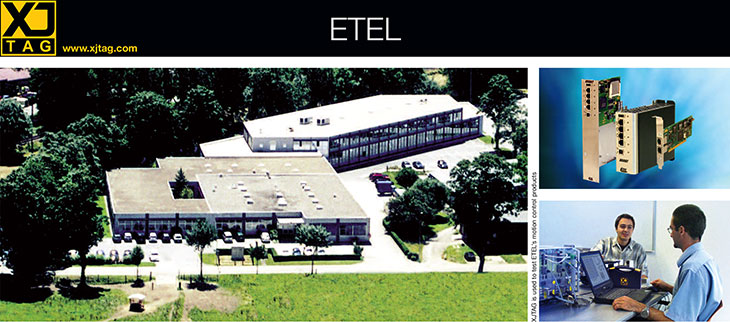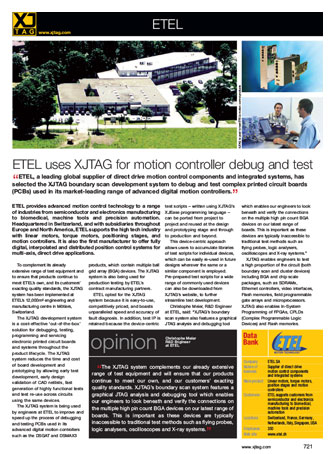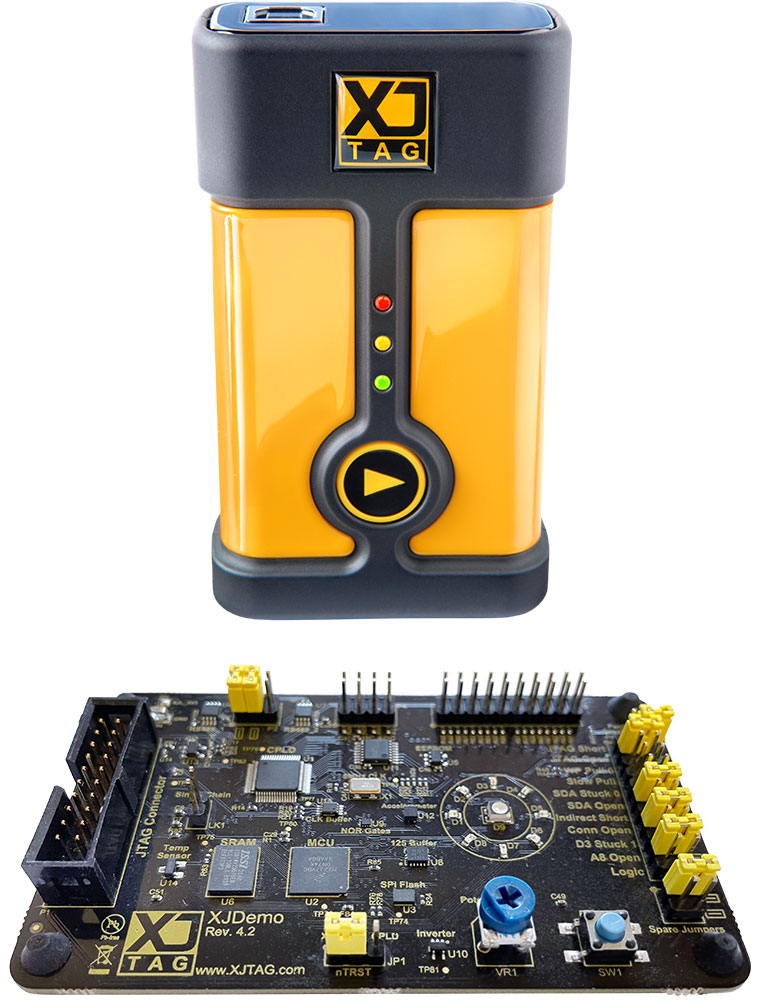
ETEL uses XJTAG for motion controller debug and test
ETEL, a leading global supplier of direct drive motion control components and integrated systems, has selected the XJTAG boundary scan development system to debug and test complex printed circuit boards (PCBs) used in its market-leading range of advanced digital motion controllers.
ETEL provides advanced motion control technology to a range of industries from semiconductor and electronics manufacturing to biomedical, machine tools and precision automation. Headquartered in Switzerland, and with subsidiaries throughout Europe and North America, ETEL supports the high tech industry with linear motors, torque motors, positioning stages, and motion controllers. It is also the first manufacturer to offer fully digital, interpolated and distributed position control systems for multi-axis, direct drive applications.
To complement its already extensive range of test equipment and to ensure that products continue to meet ETEL’s own, and its customers’ exacting quality standards, the XJTAG system has been implemented at ETEL’s 12,000m² engineering and manufacturing centre in Môtiers, Switzerland.
The XJTAG development system is a cost-effective ‘out-of-the-box’ solution for debugging, testing, programming and servicing electronic printed circuit boards and systems throughout the product lifecycle. The XJTAG system reduces the time and cost of board development and prototyping by allowing early test development, early design validation of CAD netlists, fast generation of highly functional tests and test re-use across circuits using the same devices.
The XJTAG system is being used by engineers at ETEL to improve and speed up the process of debugging and testing PCBs used in its advanced digital motion controllers such as the DSGAT and DSMAX3 products, which contain multiple ball grid array (BGA) devices. The XJTAG system is also being used for production testing by ETEL’s contract manufacturing partners.
ETEL opted for the XJTAG system because it is easy-to-use, competitively priced, and boasts unparalleled speed and accuracy of fault diagnosis. In addition, test IP is retained because the device-centric test scripts – written using XJTAG’s XJEase programming language – can be ported from project to project and reused at the design and prototyping stage and through to production and beyond.
This device-centric approach allows users to accumulate libraries of test scripts for individual devices, which can be easily re-used in future designs wherever the same or a similar component is employed.
Pre-prepared test scripts for a wide range of commonly used devices can also be downloaded from XJTAG’s website, to further streamline test development.
Christophe Meier, R&D Engineer at ETEL, said: “XJTAG’s boundary scan system also features a graphical JTAG analysis and debugging tool which enables our engineers to look beneath and verify the connections on the multiple high pin count BGA devices on our latest range of boards. This is important as these devices are typically inaccessible to traditional test methods such as flying probes, logic analysers, oscilloscopes and X-ray systems”.
XJTAG enables engineers to test a high proportion of the circuit (both boundary scan and cluster devices) including BGA and chip scale packages, such as SDRAMs, Ethernet controllers, video interfaces, Flash memories, field programmable gate arrays and microprocessors. XJTAG also enables In-System Programming of FPGAs, CPLDs (Complex Programmable Logic Devices) and Flash memories.

The XJTAG system complements our already extensive range of test equipment and will ensure that our products continue to meet our own, and our customers’ exacting quality standards. XJTAG’s boundary scan system features a graphical JTAG analysis and debugging tool which enables our engineers to look beneath and verify the connections on the multiple high pin count BGA devices on our latest range of boards. This is important as these devices are typically inaccessible to traditional test methods such as flying probes, logic analysers, oscilloscopes and X-ray systems.

Company: ETEL SA, HQ Switzerland
Nature of business:
Supplier of direct drive motion control components and integrated systems
Main product:
Linear motors, torque motors, position stages and motion controllers
Customers:
ETEL supports customers from semiconductor and electronics manufacturing to biomedical, machine tools and precision automation
Locations:
Switzerland, France, Germany, Netherlands, Italy, Singapore, USA
Employees: 350
Web site: www.etel.ch

Configure your products














